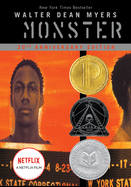This post was originally published in Nick Glass’ monthly column for Curriculum Connections, an e-newsletter published by School Library Journal in partnership with TeachingBooks.net. Subscribe to this free newsletter here.
With the Internet at their fingertips, teachers will always have examples of quality writing to share with their students. Use the audio clips featured here to demonstrate the power of opening lines, to explore the use of dialogue, to understand an author’s purpose, and to enjoy wordplay. These multimedia resources are great reasons why educators should infuse technology into writing lessons.
Memorable First Lines
Listen to and discuss how these first sentences capture the attention of readers and draw them into a story.
Charles Dickens’s A Tale of Two Cities (Recorded Books 1986) read by Frank Muller.
“It was the best of times, it was the worst of times….”
Neil Gaiman’s The Graveyard Book (HarperCollins 2008), read by Neil Gaiman.
“There was a hand in the darkness, and it held a knife.”
Great Dialogue
Hear how spoken dialogue can add drama and focus to a book experience.
Walter Dean Myers’s Monster (Listening Library 2000) performed by a full cast.
An excerpt of a scene from William Shakespeare’s Romeo and Juliet in Shakespeare’s Greatest Hits, Vol. 1 (Full Cast Audio 2003).
Author’s Purpose
Listen as authors share their inspirations.
Karen Hesse shares how a conversation and a question from a friend prompted her to write her Newbery Award winner, Out of the Dust (Scholastic 1997).
 Hear how Marie-Louise Gay strives to capture a child’s fascination of the natural world in Stella, Star of the Sea (Groundwood 1999).
Hear how Marie-Louise Gay strives to capture a child’s fascination of the natural world in Stella, Star of the Sea (Groundwood 1999).
Wordplay
Encourage your students to play with language as they write. Start by having them listen to John Agee on his use of anagrams in Elvis Lives!: And Other Anagrams (2000) and palindromes in Palindromania! (2002, both Farrar).
Palindromania! (Farrar 2002)
Elvis Lives! And Other Anagrams (Farrar 2000)
te








Leave a Reply